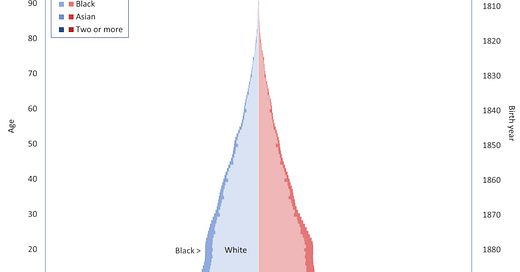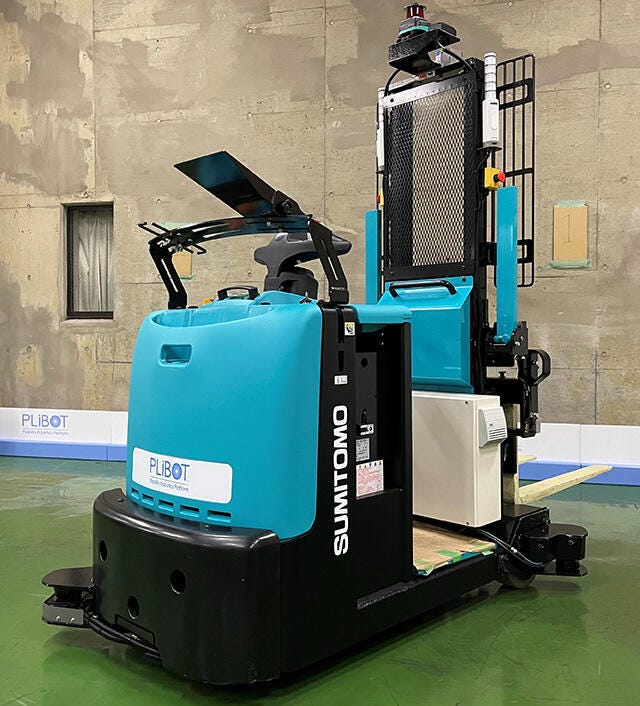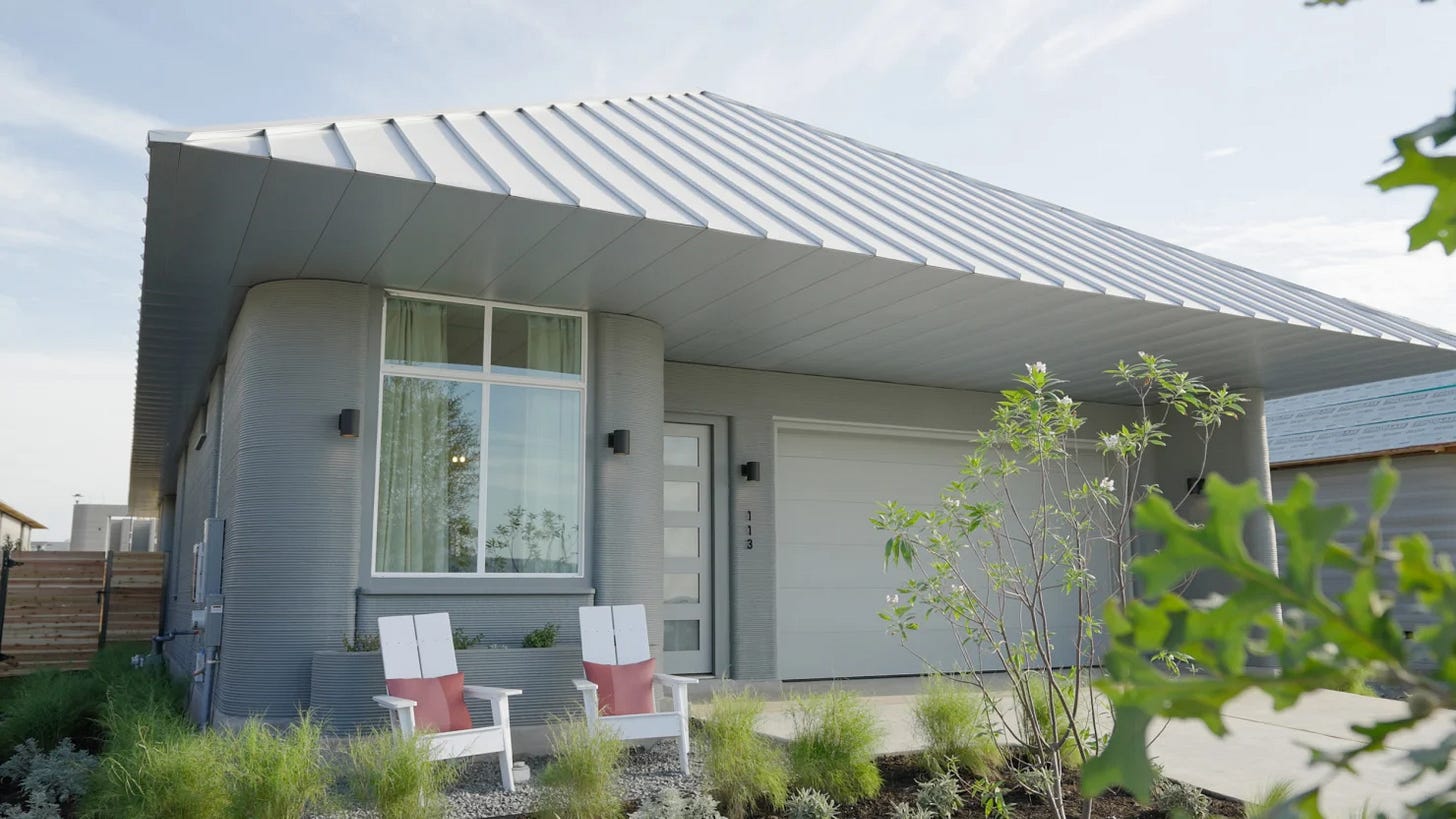The U.S. and much of the world are experiencing a seismic demographic shift—an aging population quietly reshaping the real estate landscape. Real estate has always been a cyclical business, tied closely to interest rates, economic trends, and consumer sentiment. However, this marks the first time the industry is confronting a long-term demographic wave of this magnitude.
The numbers are striking. Americans aged 65 and older are projected to rise from 58 million in 2022 to 82 million by 2050—a 47% increase. This “Silver Shift” is not just a story about numbers but about how people live, move, work, and age. It also raises an urgent question: how will real estate respond to a nation that is quite literally getting older?
Population changes from 1900 to 2020 (Source: Kaj Tallungs, U.S. Census Bureau)
Where It All Began: The Legacy of the Baby Boom
To better understand today’s trend, we need to look back. The baby boom of the 1950s and 1960s, which produced the generation now known as the boomers, created a population spike that has never been repeated in U.S. history. Fast-forward to today, and those same individuals are beginning to retire. Meanwhile, subsequent generations like Gen X and Millennials, while sizable, haven’t matched the boomers in number. With Gen Z being even smaller in population, the demographic trend underscores a downward trend in birth rates.
Childcare costs over the years (Source: First Five Years Fund)
According to the U.S. Department of Labor Blog, a combination of economic pressures and cultural shifts have contributed to the declining birth rate in the United States. Rising inflation and higher interest rates have made planning for children even more difficult for young households. One major factor is the soaring cost of childcare, which is now nearly four times higher than a few decades ago. This sharp increase in expenses has made starting and raising a family significantly more financially burdensome for many younger Americans.
Learning from Japan: Aging Ahead of the Curve
A good benchmark for this social phenomenon is Japan, which has been navigating the challenges of an aging society for decades. Japan faced low birth rates, rising healthcare costs, and a shrinking labor force, which led to slower economic growth and profound shifts in real estate.
Older adults in Japan, for example, tend to age in place, which has slowed demand for new housing and put downward pressure on home prices in rural areas. At the same time, the Japanese construction industry has suffered a steep drop in young labor participation, falling from 19% to 12% in the under-29 age group between 2002 and 2022.
Automation robots for transportation of materials by Obayashi (Source: Obayashi Website)
Yet Japan’s story isn’t just one of struggle but also of innovation. Faced with labor shortages, the country has been progressive with robotics and automation. For instance, companies like Komatsu have introduced ICT-enabled excavators and bulldozers that require less skill to operate. This is perfect for an aging workforce. Firms like Obayashi have developed autonomous robots for material transport. In addition, drone-based 3D mapping has become a tool to reduce physical surveying labor. Government programs like i-Construction have backed these efforts, incorporating connected technologies and artificial intelligence to boost productivity.
How the U.S. Market Is Evolving
The United States has also been actively developing its technology sector. With a real estate-focused view, technology is beginning to play a more visible role in the construction sector. In Texas, companies like ICON and COBOD International are 3D printing homes, mainly single-family and townhomes. The push for aging in place is growing. Seniors increasingly prefer homes that allow them to stay independent longer, spurring a rise in demand for accessibility-friendly designs: wider doorways, zero-step entries, and one-level living.
The first 3D-printed house completed for a new 100-home development north of Austin, Texas by ICON (Source: CNN)
This demographic shift also impacts the commercial sector. Demand is rising for senior living communities, assisted living, and memory care facilities, all of which need to be thoughtfully integrated into the urban fabric. The suburban sprawl of the past is giving way to more walkable, community-focused designs, places where seniors can live near healthcare, family, and daily conveniences.
What Comes Next: Beyond Interest Rates and Tariffs
The real estate market is already contending with high interest rates and rising construction costs (partly due to tariffs and global supply chain disruptions). However, aging adds another layer of complexity. Key questions now emerge, such as:
How will developers rethink suburban housing to suit retirees who don’t want to feel “aged out” of their neighborhoods?
Will metropolitan cities keep up with the need for accessible infrastructure and transit?
Can healthcare and housing become more integrated?
Looking ahead to the next few decades, I believe we are likely to see the emergence and growth of new real estate asset classes in response to demographic and technological shifts. Healthcare anchored mixed-use developments, for example, will become more common as hospitals increasingly serve as community hubs, integrating cafés, fitness centers, and nearby housing to blend medical services with lifestyle amenities. Senior-focused co-living will also grow in importance, offering a solution to both affordability and social isolation by balancing independence with community and care. Additionally, tech-enabled construction and property management will play a key role, using innovations like IoT-based predictive maintenance and voice-activated smart home systems to make aging in place safer and more comfortable. Together, these trends suggest a future where real estate adapts to meet the evolving needs of an aging population and a tech-driven society.
Sources:
https://www.cnn.com/style/texas-3d-printed-home-icon/index.html
https://www.personalfinanceclub.com/the-cost-of-raising-a-child/
https://www.nuveen.com/en-us/insights/alternatives/how-does-an-aging-population-impact-real-estate
https://blog.dol.gov/2024/09/30/we-analyzed-5-years-worth-of-childcare-prices-heres-what-we-found?utm_source=chatgpt.com
Read more about the author: Irene HwangEmail: ih2176@nyu.edu








